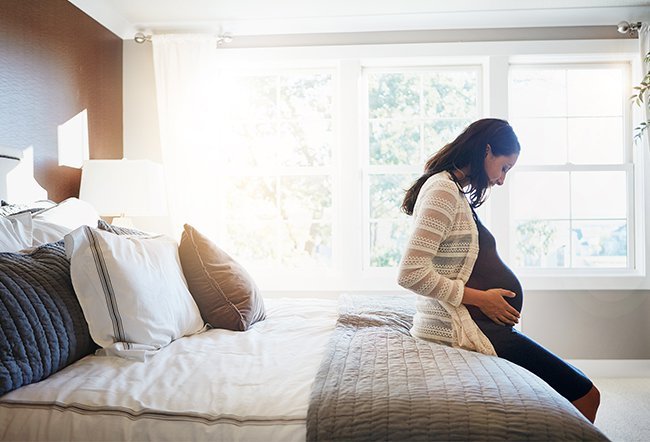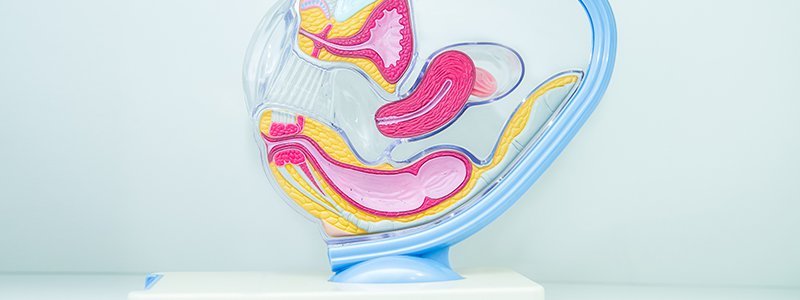What is a yeast infection?

A yeast infection, also referred to as vaginal candidiasis, is a fungal infection caused by a type of fungus called candida. Even though a yeast infection is not a threat to you and your child, it can cause you extreme discomfort.
The most common type of infection during pregnancy is a yeast infection. Pregnant people are at a higher risk of contracting this infection due to hormonal changes, which alter the normal pH levels in the vagina during pregnancy. Yeast infections can cause extreme discomfort — especially during pregnancy — because they’re accompanied by severe itching in the vagina and a white, cheese-like, odd-smelling vaginal discharge.
Yeast infections are more likely to occur during the second and third trimesters. Though there are no major negative effects of the infection on your pregnancy, it can be more difficult to control when you’re pregnant. It’s important to get early treatment to avoid transferring the infection to your baby during delivery.
If you’re wondering about topics like “how long does it take to get rid of a yeast infection while pregnant?” and “how is a yeast infection treated during pregnancy?” then read on to learn more.
A yeast infection, also referred to as vaginal candidiasis, is a fungal infection caused by a type of fungus called candida. This fungus is normally present in the body — especially the mouth, gut, throat, and vagina — and on the skin without causing any harm.
Yeast infections happen when the acidity (pH) and yeast levels in your vagina are imbalanced. This imbalance causes the yeast to overgrow, which leads to the infection.
Causes of a yeast infection during pregnancy
During pregnancy, your body produces more glycogen due to the rising levels of estrogen. Higher levels of glycogen create a good environment for the fungus to multiply abnormally, which leads to a yeast infection. Other factors that may encourage a yeast infection include:
- An impaired immune system
- Antibiotics or steroid medicines
- Douching, or using vaginal sprays
- Diabetes and uncontrolled blood sugar
- Being sexually active
- Poor hygiene practices
Symptoms of a yeast infection during pregnancy
The symptoms of a yeast infection may vary depending on how much the infection has advanced. They include:
- Soreness and itching in the vagina
- Swelling and redness of the vulva
- Burning sensation during intercourse and when urinating
- Increased and watery vaginal discharge
- Discharge that smells yeasty or bread-like
- Colored discharge — possibly yellow or green and sometimes white/tan
You’re more likely to have chronic yeast infections when you’re pregnant. This means that you might have multiple and severe yeast infections, especially during your second and third trimesters. Chronic yeast infections are usually accompanied by extreme itching, redness, and swelling that can get more difficult to treat over time.
How to diagnose a yeast infection during pregnancy
If you suspect you have a yeast infection or start experiencing some of the symptoms mentioned above, make an appointment with your doctor immediately. Early treatment of a yeast infection can help you avoid more severe symptoms of infection.
Your doctor will likely conduct a pelvic exam using a painless swab to collect discharge from your vagina. They’ll then examine it under a microscope to identify the yeast and diagnose the infection. A culture may be sent to the lab, but only in rare cases.
Treatment of a yeast infection during pregnancy
Outside of pregnancy, you’d usually be prescribed a single-dose oral medication called fluconazole. It clears up the infection within a few days. However, this type of medication has not been proven safe to take during pregnancy and lactation because it may affect your baby.
As a result, your doctor will recommend vaginal creams and suppositories. These antifungal medications will fight off the overgrown yeast and restore your vaginal balance without causing any harm to your baby. Nevertheless, not all antifungal vaginal creams are safe to use during pregnancy. Ask your doctor for guidance on which one works best for you.
Getting rid of a yeast infection during pregnancy may take 10–14 days. The severe symptoms might become less intense within the first few days of treatment. After complete recovery from the infection, you can use starch-free drying powder or nystatin powder to avoid getting infected again.

QUESTION
The vagina includes the labia, clitoris, and uterus. See Answer
Prevention of a yeast infection during pregnancy
A yeast infection is especially uncomfortable to deal with during pregnancy. Here are some of the things you can do to avoid yeast infections during pregnancy:
- Wear loose and breathable underwear, especially cotton or silk.
- Wipe from front to back after using the toilet.
- Use unscented soap when taking a shower.
- After taking a shower, use a blow dryer on low heat to dry the outside of your genitals. Yeast thrives in damp spaces.
- Limit your sugar intake. Sugar encourages the growth of yeast.
- Clean your genital area gently with warm water throughout the day.
- Include foods that contain lactobacillus acidophilus — like yogurt — in your diet.
- Make sure your blood sugar is under control if you have diabetes.
- Remember to rest and eat healthy foods. This will help your body fight infections by improving your immunity.
Things to avoid during pregnancy
During pregnancy, your body is at a higher risk of infections. Avoiding the following will keep you safe from a yeast infection during pregnancy:
- Douching
- Feminine hygiene sprays or scented laundry detergents
- Bubble baths, or sitting in a hot tub
- Wearing damp clothes — shower and change immediately after swimming or working out
- Colored or perfumed toilet paper
- Wearing underwear or pajamas when sleeping. Wearing a night robe instead will help with air circulation.
- Tight-fitting clothes such as jeans — these create a moist environment that encourages the growth of yeast.
How to deal with a yeast infection during pregnancy
Even though a yeast infection is not a threat to you and your child, it can cause you extreme discomfort. If it has progressed and the symptoms don’t disappear after treatment, consult your doctor. Don’t use over-the-counter medication without your doctor’s advice. And always remember to finish the dose prescribed to you by your doctor to prevent the yeast infection from coming back.
Early treatment and prevention will help you avoid passing a yeast infection to your baby during delivery.
Latest Women’s Health News
Daily Health News
Trending on MedicineNet
Medically Reviewed on 4/27/2022
References
American Pregnancy Association: “Yeast Infections During Pregnancy.”
BabyCenter: “Yeast infections during pregnancy.”
Birth Injury Help Center: “Yeast Infections During Pregnancy | Complications of Untreated Infection.”
Canadian Family Physician: “Vaginal yeast infections during pregnancy.”
Centers for Disease Control and Prevention: “Vaginal Candidiasis.”
Embryo Women’s Health: “Yeast Infections During Pregnancy.”
What To Expect: “Yeast Infections During Pregnancy.”